MARIANI’SVirtual
Gourmet
November 24, 2013
NEWSLETTER

J.C.
Leyendecker (1928)
❖❖❖
THIS WEEK
BOSTON
DINING
by John Mariani
NEW YORK CORNER
Anassa Taverna
by John Mariani
NOTES FROM THE WINE
CELLAR
To Your Health for the Holidays
by Geoffrey Kalish, MD
❖❖❖
BOSTON
DINING

 Bronwyn
Bronwyn
255 Washington Street
Somerville, MA
617-776-9900
bronwynrestaurant.com
I’m not really positive German-Austrian food will be the next Big Thing (though it’s got a lot more grounding than the fleeting fad for New Nordic Cuisine). Bronwyn in the Boston suburb of Somerville is a signal reminder of how wursts and beer have never gone out of favor but are only now being sublimated in novel ways that make such fare exactly what you’re dying to eat right now.
Chef
owner Tim We
ichmann is rendering everything from housemade
wursts—a gargantuan platter at $32 gets you
six varieties, including currywurst and 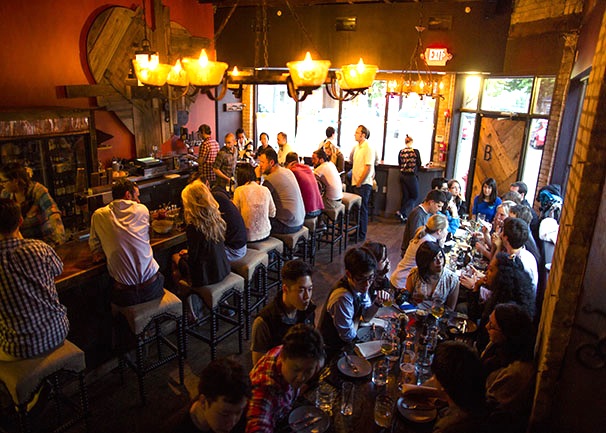 lemon
weisswurst—along with bulked-up bacon
dumplings called knödel with white summer
peaches. He does biernüdeln—pasta
made with beer--and
the best, tangiest sauerbraten you’ll ever
taste outside of Munich.
lemon
weisswurst—along with bulked-up bacon
dumplings called knödel with white summer
peaches. He does biernüdeln—pasta
made with beer--and
the best, tangiest sauerbraten you’ll ever
taste outside of Munich.
When you sit down at the two-room restaurant, you begin by smearing schmaltz—pork fat—onto a giant Bavarian pretzel with roasted apple mustard, then have a beer soup with a cheddar cheese kreplach. The borscht (above) is as beautiful as it is delectable. The venison pastrami with gulyas puree and the crisp, buttery jagerschnitzel are just made to go with the 40 beers poured here, from a 5.7 percent alcohol Warka Pilsner to a 9.5 percent Zywiec Baltic porter. The bar serves as a weinstube (wine bar), where hard-to-find varietals like Austrian rotgipfler, Hungarian furmint, and Croatian plavac malí anchor the list.
Bronwyn is a neighborhood place
but it deserves national attention for
proving the value of how what’s
tried-and-true becomes pride in the new
in the hands of a great chef.
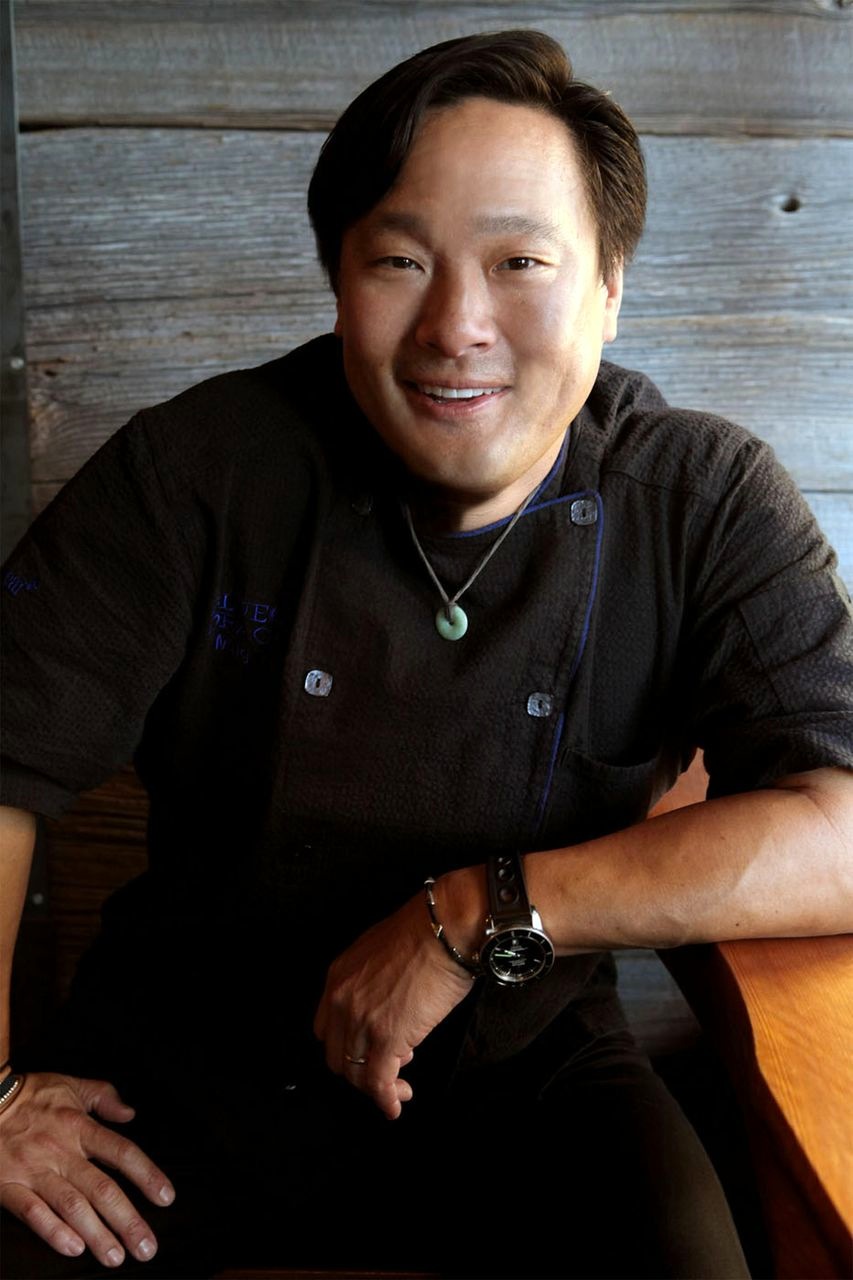
BLUE
DRAGON
324 A Street
617-338-8585
Fifteen years ago I
honored a young Chinese-American chef named Ming
Tsai (left) as Chef of the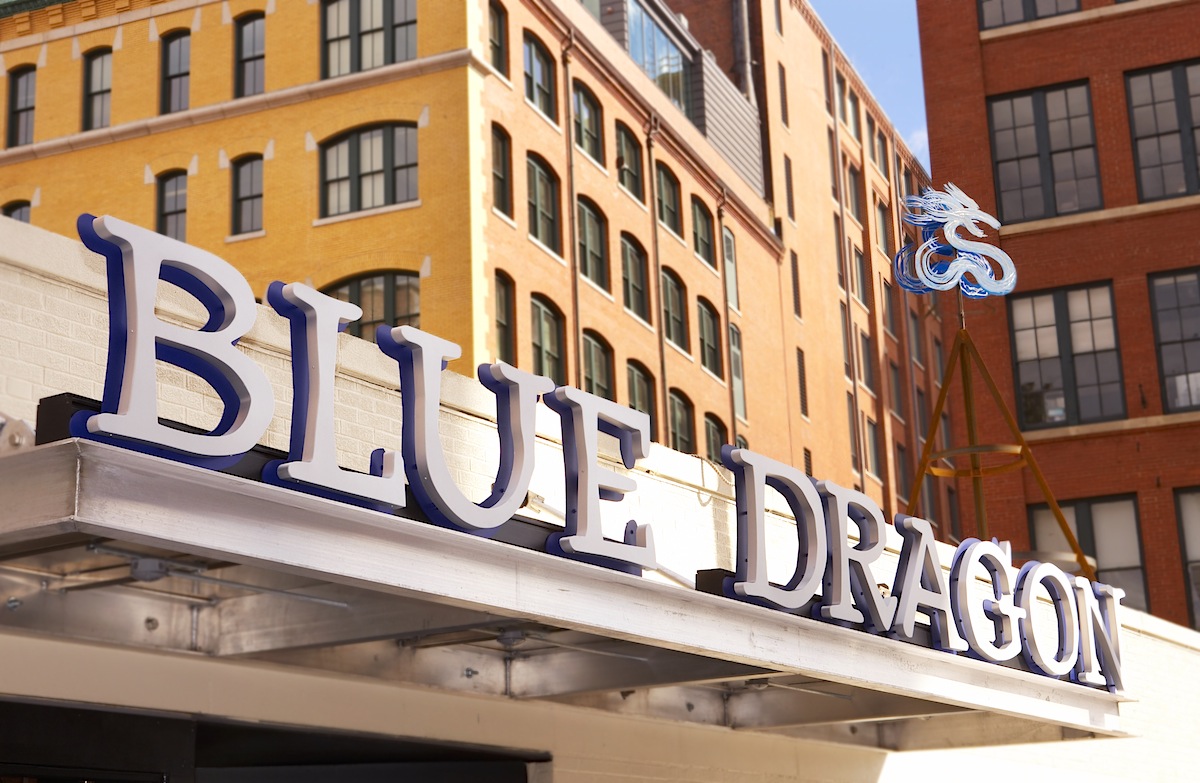 Year for his groundbreaking Asian
restaurant Blue Ginger in Wellesley, Massachusetts. Since
then, his trajectory has been ever upward, not least
as host of the long-running, award winning TV
cooking show “Simply Ming,” whose gentlemanly,
down-to-earth approach has been a balm to all the
screeching, fright wigged nonsense that passes for
entertainment these days.
Year for his groundbreaking Asian
restaurant Blue Ginger in Wellesley, Massachusetts. Since
then, his trajectory has been ever upward, not least
as host of the long-running, award winning TV
cooking show “Simply Ming,” whose gentlemanly,
down-to-earth approach has been a balm to all the
screeching, fright wigged nonsense that passes for
entertainment these days.
He certainly took his time to open a new place—an
80-seat Asian gastropub that has been jammed from
lunch and after midnight. Blue Dragon, with
executive chef Tom Woods, is a revelation of
myriad tastes and preparations you just don’t find
in places with names 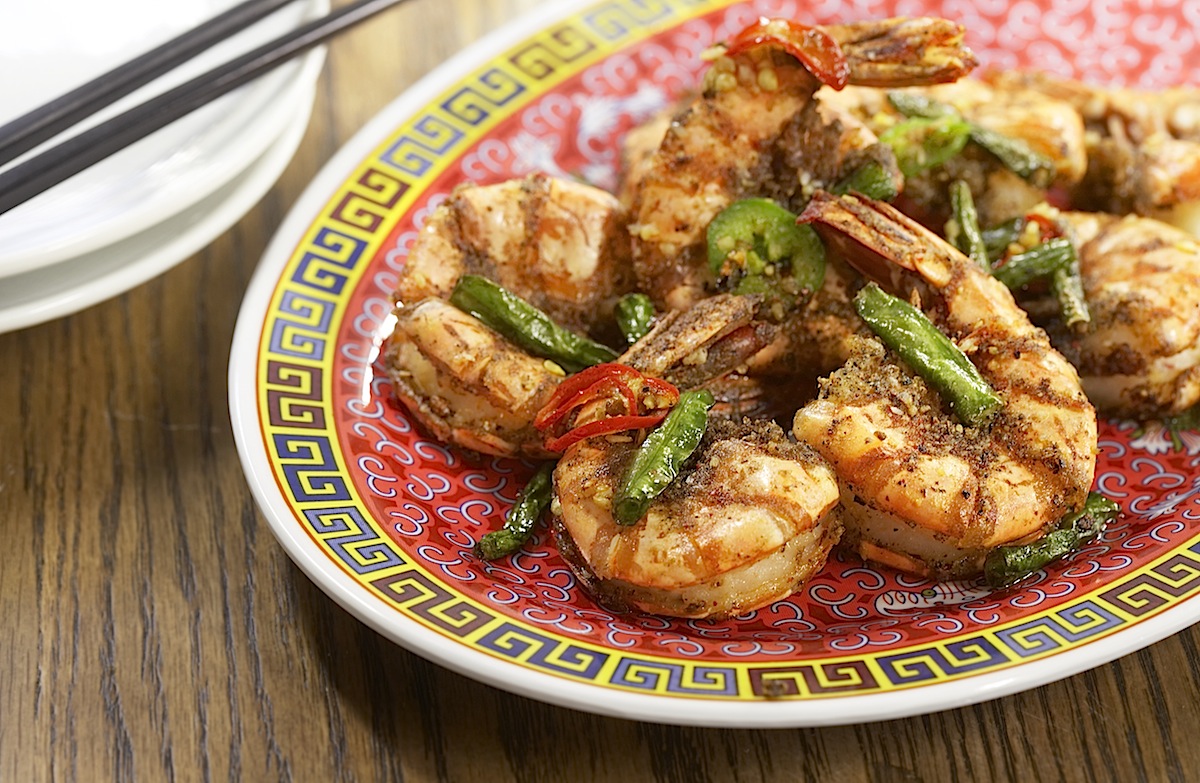 like New Hunan Balcony and
Lotus Tiger King.
And Blue Dragon is a great looking room,
almost diner-like, with Ming right there at the open
kitchen, picking up plates and schmoozing with
wide-eyed guests taking photos with their iPhones. At Blue Dragon
the quandary is choosing among dishes that all look
and smell so mouthwatering—how do you stop yourself
from ordering six, seven, eight dishes like Japanese
sweet potato chips with charred scallion and meat jus dip?
Braised beef and celery pot stickers? Crispy pork
tail with mango sticky rice? Korean chicken wings
with fresh kimchee and soy glaze? Or “Mom's
Salt and Pepper Shrimp”?
like New Hunan Balcony and
Lotus Tiger King.
And Blue Dragon is a great looking room,
almost diner-like, with Ming right there at the open
kitchen, picking up plates and schmoozing with
wide-eyed guests taking photos with their iPhones. At Blue Dragon
the quandary is choosing among dishes that all look
and smell so mouthwatering—how do you stop yourself
from ordering six, seven, eight dishes like Japanese
sweet potato chips with charred scallion and meat jus dip?
Braised beef and celery pot stickers? Crispy pork
tail with mango sticky rice? Korean chicken wings
with fresh kimchee and soy glaze? Or “Mom's
Salt and Pepper Shrimp”?
Best not to even try. Bring your friends, order
rounds of craft beers, and don’t get up from the
table until you’re way beyond ecstasy. And even if
you've eaten way too much, force yourself to order
"The Cookie" a deep dish chocolate chip cookie
served warm and topped with ice cream and soy
caramel sauce.
Open for Lunch and dinner daily. Snacks
and dim sum $3-$9; main dishes $9-$16.
REVERE HOTEL BOSTON COMMON
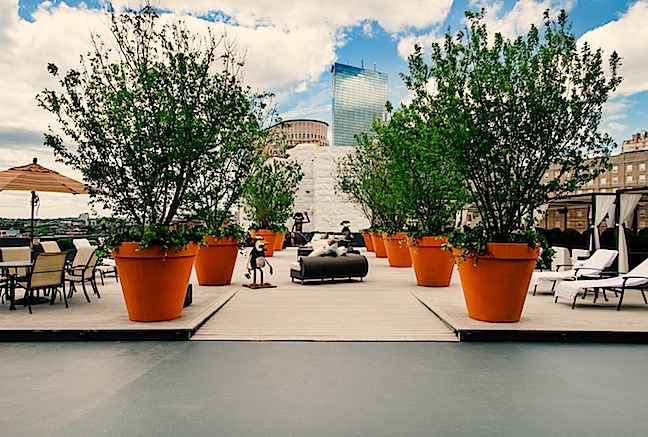
200 Stuart Street
617-482-1800
reverehotel.com
The
Revere Hotel Boston Common is one of the city’s most
modern luxury boutique hotels, with just 356 rooms,
located conveniently in the city’s theater district
and near the Common. It obviously draws a young
crowd, both for its reasonable room rates and its
sheer conviviality, not least at the Rooftop@Revere
Lounge and Bar (right),
seven stories above ground, next to the beautiful
swimming pool here.
From there a panorama of Boston’s
landscape gives you a very good sense of how
intimately this fairly small city is tied to the
water and the harbor and how its proud inhabitants
have maintained as much historicity in its
neighborhoods as possible. (It is sad how the
city fathers allowed such a grotesque Government
Center to be built in the heart of the city.)
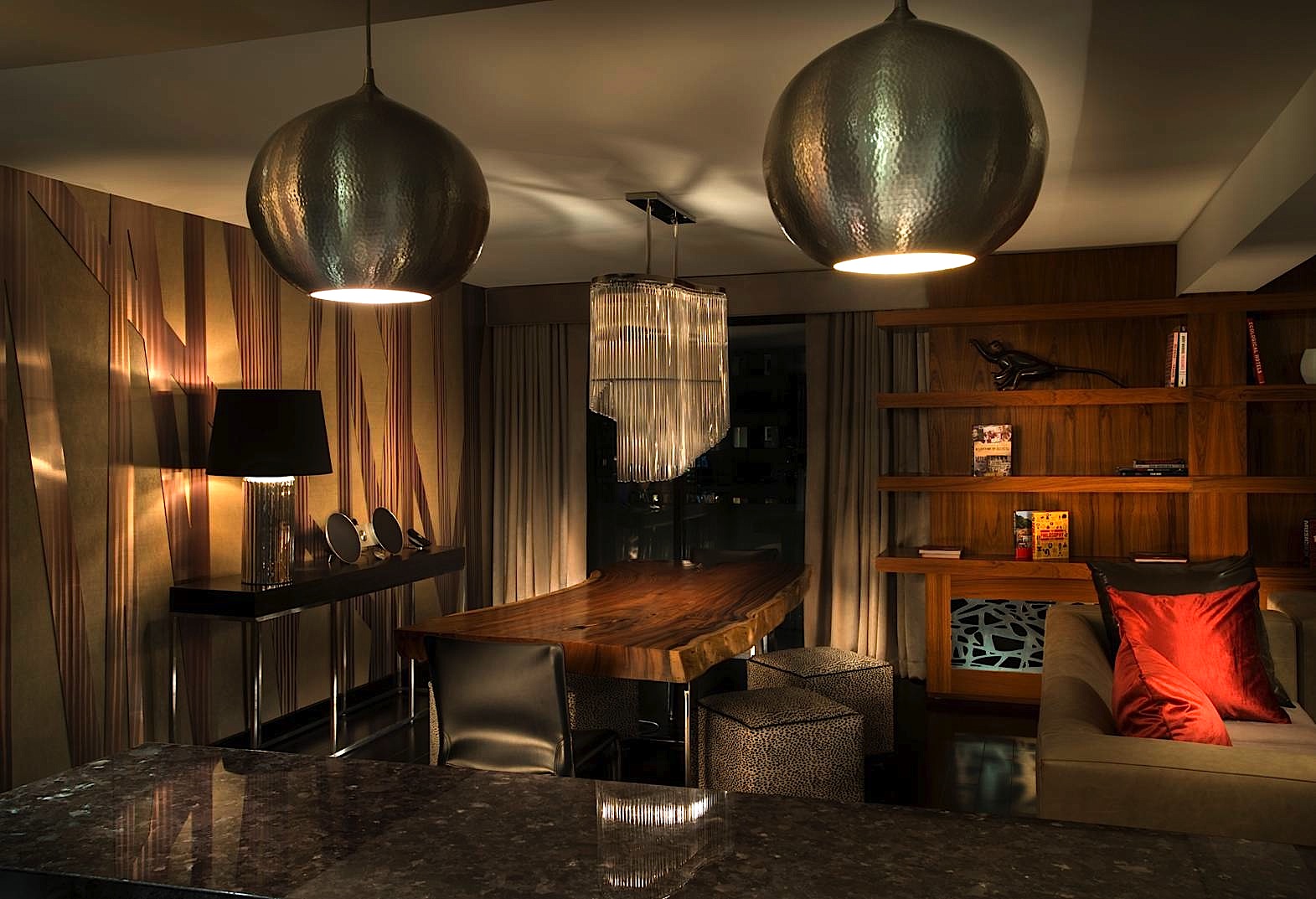 The Rooftop
encompasses 16, 000 square feet and, when open (it’s
closed right now for the winter season), is set with
broad, deep cabanas that may be rented, and chaise
lounges where you may relax and feast on a
remarkable array of dishes for which the word
“snacks” is wholly insufficient. Indeed, my
friend and I made a complete meal of beautifully
wrought items like Nantucket bay scallop ceviche in
Bibb lettuce wraps and a coconut shell; Bully Boy
tequila shrimp cocktail spiked with wasabi; spiced
hummus with warm, puffy pita bread; and a terrific
array of sliders that included Black Angus beef,
Caribbean chicken, and, in a town of first-rate
lobster rolls (below),
the Revere’s stand near the top of the pack,
luscious, creamy, and generous with lobster. Dishes
run $5-$18.
The Rooftop
encompasses 16, 000 square feet and, when open (it’s
closed right now for the winter season), is set with
broad, deep cabanas that may be rented, and chaise
lounges where you may relax and feast on a
remarkable array of dishes for which the word
“snacks” is wholly insufficient. Indeed, my
friend and I made a complete meal of beautifully
wrought items like Nantucket bay scallop ceviche in
Bibb lettuce wraps and a coconut shell; Bully Boy
tequila shrimp cocktail spiked with wasabi; spiced
hummus with warm, puffy pita bread; and a terrific
array of sliders that included Black Angus beef,
Caribbean chicken, and, in a town of first-rate
lobster rolls (below),
the Revere’s stand near the top of the pack,
luscious, creamy, and generous with lobster. Dishes
run $5-$18.
With these you may sip signature cocktails like the
Hibiscus Rum Punch of Rum, Bacardi 8, Domaine de  Canton,
hibiscus tea syrup and lime, or the Frida, with
Tanteo jalapeno tequila, fresh watermelon puree, and
lime. To make things still merrier, the staff on the
Rooftop is composed of some beautiful young women
dressed in swimwear by Pret-à-Surf, which
makes the whole experience up there more like South
Beach than
Canton,
hibiscus tea syrup and lime, or the Frida, with
Tanteo jalapeno tequila, fresh watermelon puree, and
lime. To make things still merrier, the staff on the
Rooftop is composed of some beautiful young women
dressed in swimwear by Pret-à-Surf, which
makes the whole experience up there more like South
Beach than  Boston.
Boston.
They are an extremely cordial
group and the Rooftop has become a major draw for
cocktails and sunset any time after 5 p.m. There is
also an indoor Emerald Lounge whose brilliant
lighting color gives it its name, and a restaurant,
Rustic Kitchen, featuring Mediterranean cuisine by
Chef Michael Kelley, which I did not have a chance
to try on my visit.
The
lobby is set with dramatic metal sculpture, and the
same degree of warm hospitality upstairs makes
check-in and the courtesy of being shown to your
room quick and easy. The colorful premises and
layout of the rooms themselves balance all the most
modern amenities with exceptional comfort in the
furniture and bedroom.
One caveat: The Revere took
over an older, less deluxe hotel, so the air
conditioning and heating units in some rooms can be
loud at night when you’re trying to sleep.
Fortunately the pillows are downy enough to block
out some of the noise.
Looking at the photos
arrayed above, I'm not sure I can wait for next
summer.
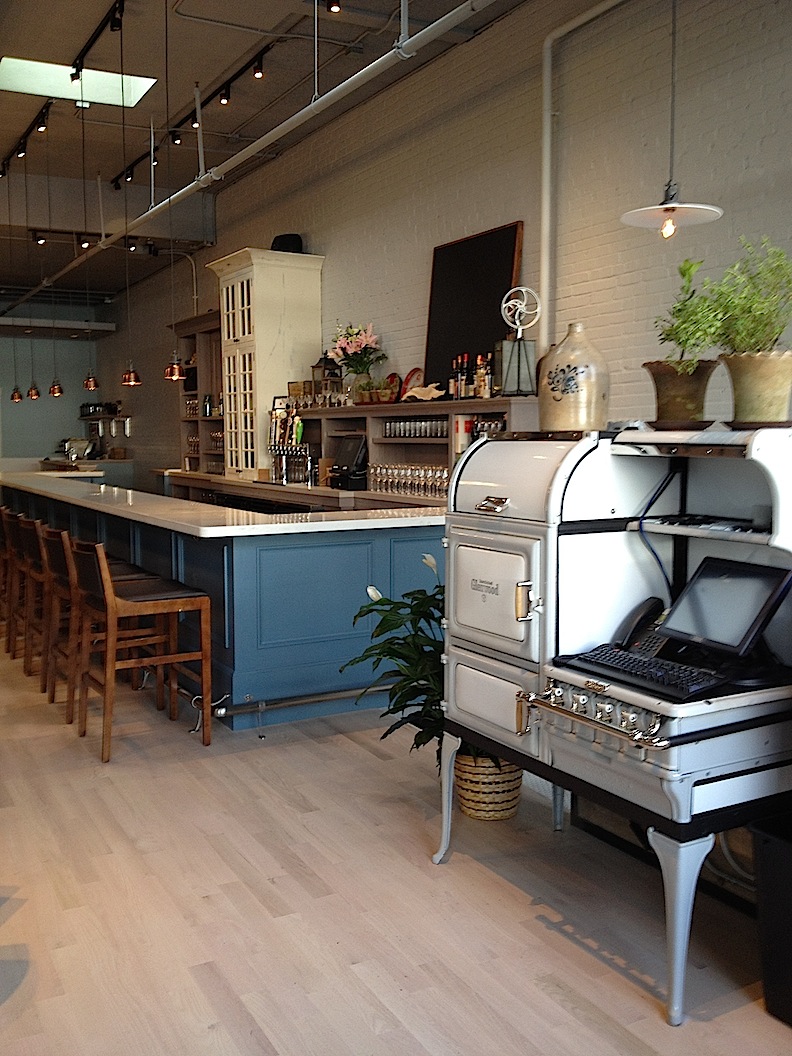 PURITAN & COMPANY
PURITAN & COMPANY
1166 Cambridge Street
Cambridge, MA
617- 615-6195
I hesitate to write
about how Puritan & Company is faring these days
because it has been several months since I (happily)
dined there. Still, today's menus seem quite
in the same style, with many of the same items,
Chef/partner Will Gilson set out at the beginning to
evoke in a homey, old-fashioned atmosphere that
includes an old ceramic 1920s stove 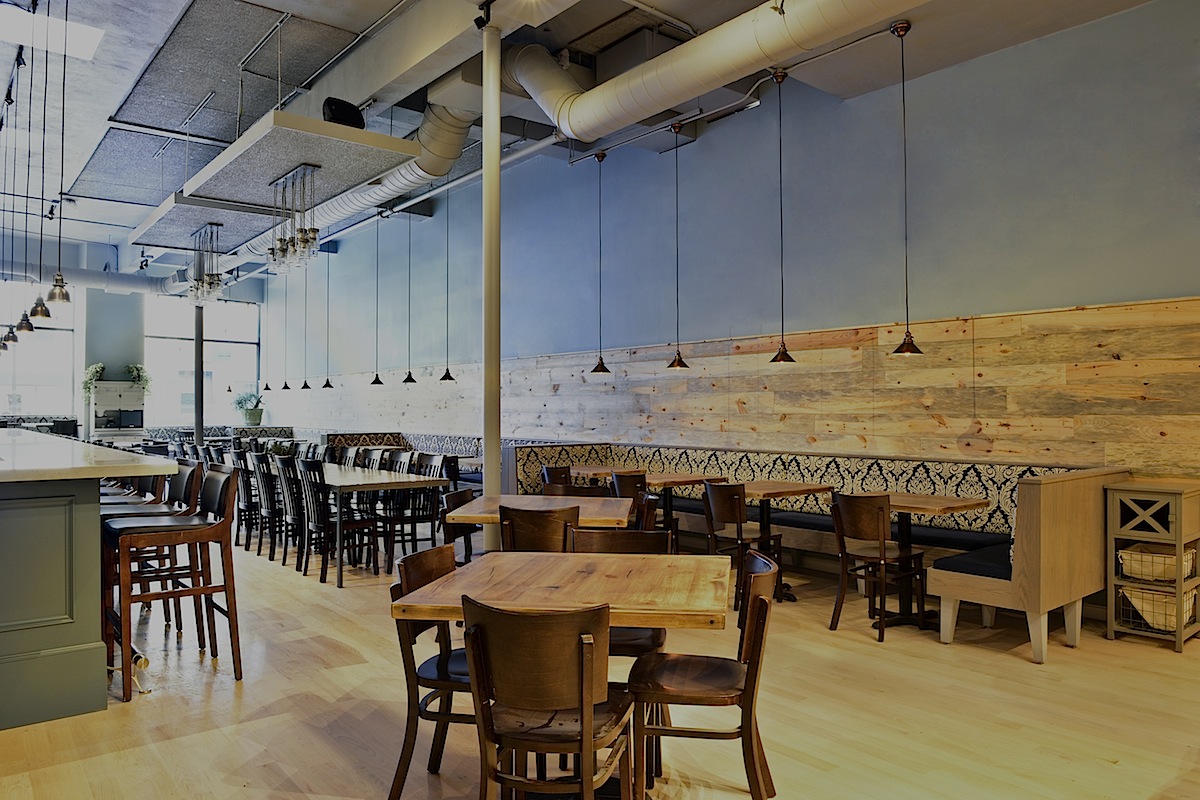 (in which they have set
the computer and host stand). Soapstone sinks make
up the oyster bar here, and there is a cozy communal
dining table.
(in which they have set
the computer and host stand). Soapstone sinks make
up the oyster bar here, and there is a cozy communal
dining table.
This used to be the Puritan Cake
Company, and Gilson himself is a 13th generation
descendant of the Mayflower. A better pedigree for
culinary pride than that would not be easy to find.
We enjoyed ourselves that evening
very much for all sorts of reasons, not least the
dining room’s extremely cordial staff. It’s a
good-looking place, the music not too loud, and
clearly people were enjoying themselves to the hilt.
Is it New England reserve that keeps them from
shouting like Americans elsewhere when dining out?
The wine list strong, sommelier very informative.
 We
were bowled over by the hot Parker House rolls--the name refers to the
Parker House restaurant in Boston, where the rolls
were first made--and the manager was nice enough to
give us a box to take home. They were truly
transcendent, and matched by the gougeres (left), though
one for three bucks, for an item given away in
France, is a tad steep. Every one of the appetizers
was first-rate, and it was difficult even to choose
which were better than others. Luscious
confit, innovative swordfish pastrami, frisee with
foie gras, and desserts were all very good and
imaginative.
We
were bowled over by the hot Parker House rolls--the name refers to the
Parker House restaurant in Boston, where the rolls
were first made--and the manager was nice enough to
give us a box to take home. They were truly
transcendent, and matched by the gougeres (left), though
one for three bucks, for an item given away in
France, is a tad steep. Every one of the appetizers
was first-rate, and it was difficult even to choose
which were better than others. Luscious
confit, innovative swordfish pastrami, frisee with
foie gras, and desserts were all very good and
imaginative.
I was, however, disappointed in
some of the entrees. The duck was good but
hadn’t much flavor on its own, needing seasoning;
the grilled cobia was actually fishy and unpleasant;
and I expected the “local flounder” to come as a
fillet flat on a plate but it was like a rollmop,
tasting steamy. I trust that those faux pas are not
an every night occurrence, for Gilson is a serious
chef and Puritan & Company a winning combination
of New England fare and hospitality.
Open nightly for dinner,
for brunch on Sun.; Starters $3-$15; main courses
$17-$28.
❖❖❖
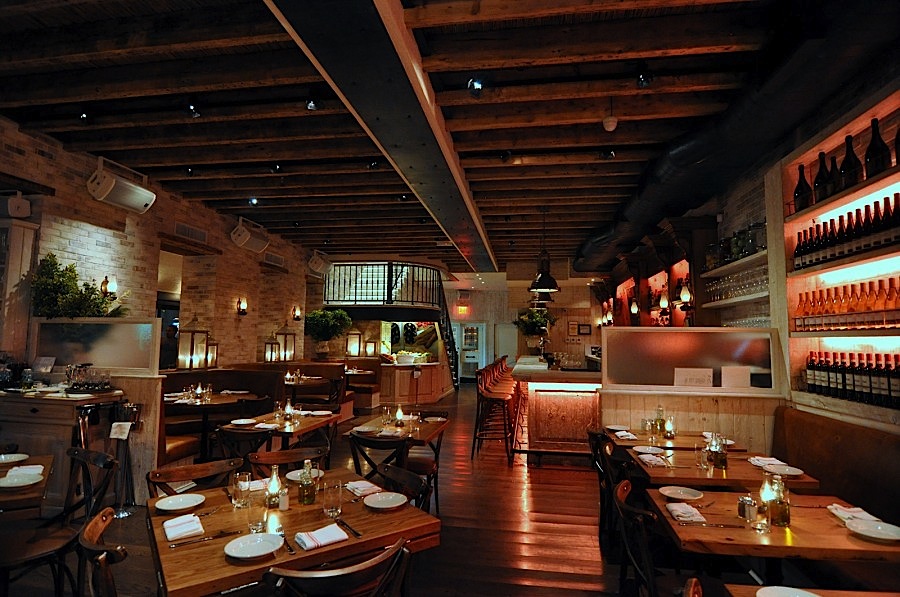 Anassa
Anassa
200 East 60th Street (off Third Avenue)
212-371-5200
www.anassataverna.com
Those
of you old enough to remember Yellow Fingers on
Third Avenue and 60th Street probably also remember
Sign of the Dove, Maxwell’s, Serendipity 3 and the
original TGI Friday’s—all must-see boites for the
thrashing singles scene of the 1960s and 1970s.
(Wasn't it at Yellow Fingers that Meryl Streep
and Dustin Hoffmann [below] battled over custody 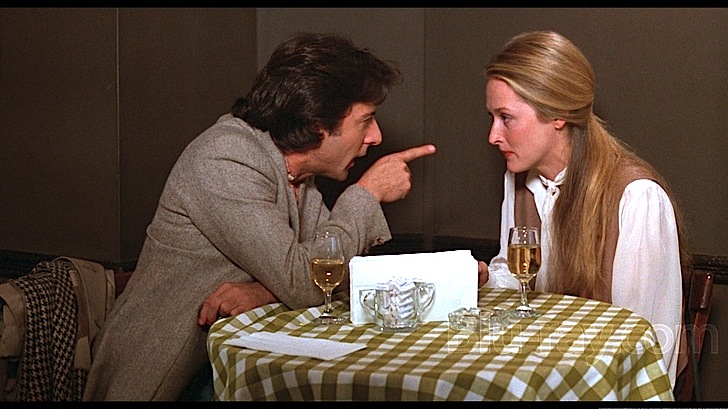 in “Kramer vs Kramer"?)
Many restaurants have occupied that enviable
space—right across from Bloomingdale’s and a bunch
of movie theaters—yet none survived for very long.
in “Kramer vs Kramer"?)
Many restaurants have occupied that enviable
space—right across from Bloomingdale’s and a bunch
of movie theaters—yet none survived for very long.
On the basis of the
packed crowd I saw at Anassa the other night, this
is one tenant I hope has a long lease. Anassa,
which opened in May and means "breath of fresh air,"
is thoroughly Greek, under executive chef Nikolaos
Karvelas and owner Tim Pappas, the power behind Avra
on East 48th Street. It’s an expansive
place--170 seats on two floors; and the second floor also was occupied on a
mid-week night--with a décor “inspired by the
Greek village and seaside,” so you’ll find all the
expected touches of rusticity, along with a
collection of traditional Greek jewelry such as
“Evil Eyes,” and “Komboloi beads (Worry Beads),”
available for purchase.
The
whole place has a vibrancy that draws a very mixed
crowd of young and older people from the
neighborhood, and Anassa carries on the long
tradition of the location’s singles bar ethos.
As you might expect, then, Anassa can get
very, very loud, not helped by piped-in music of a
throbbing kind you’re unlikely to hear at a taverna
in Plaka.
The greeting is cordial, the waitresses
pretty and from various eastern European stock, and
the menu dependable, if striking no new ground in 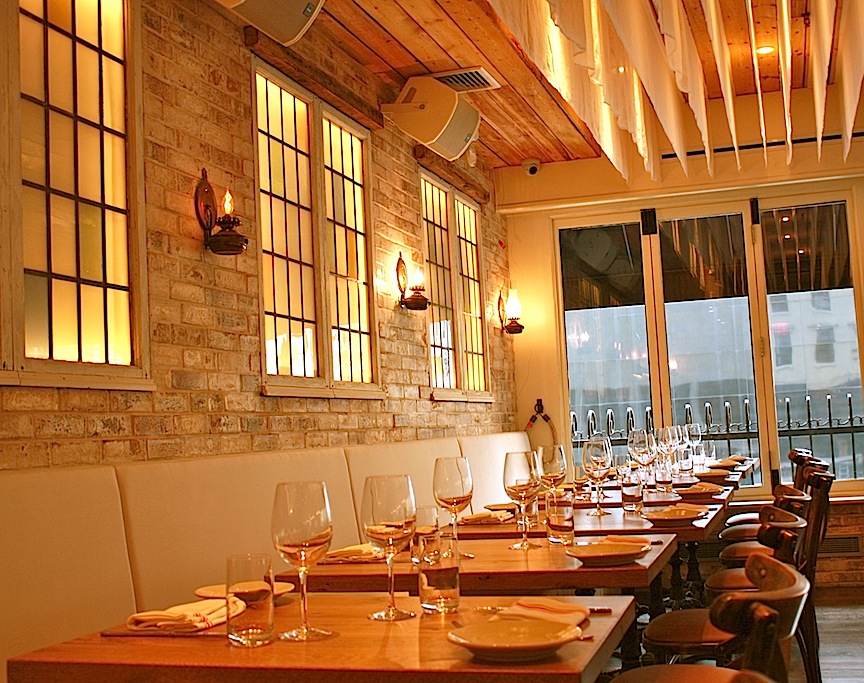 modern Hellenic cuisine.
But what is on the menu is, overall, delicious
and true to form. The wine list has a slew of
good Greek wines well worth ordering.
modern Hellenic cuisine.
But what is on the menu is, overall, delicious
and true to form. The wine list has a slew of
good Greek wines well worth ordering.
As in all Greek restaurants, the
mezes are
usually the most enticing, always accompanied by
warm pita bread, spreads like tzatziki,
taramasolata, skordalia, and fava puree ($12).
The octopus at Anassa is as good as any in
town, tender, warm, nicely charbroiled with onions
and capers (below).
I know saganaki
is just fried cheese, but what’s not to love about
that, and Anassa does a hot, crispy version.
Meatballs in tomato sauce went fast at our
table.
Among the main courses I enjoyed
were grilled lamb chops with roasted potatoes,
grilled tomato and topped with tzatziki,
which gave them extra flavor. The eggplant in the moussaka gets
a boost from involving chunks of lobster meat and a
béchamel sauce, and the Thursday special was
braised veal shank, coming right off the bone, with
tomatoes, orzo and the good touch of tangy feta
cheese. The only real disappointment was the showy
dish of wild striped bass cooked 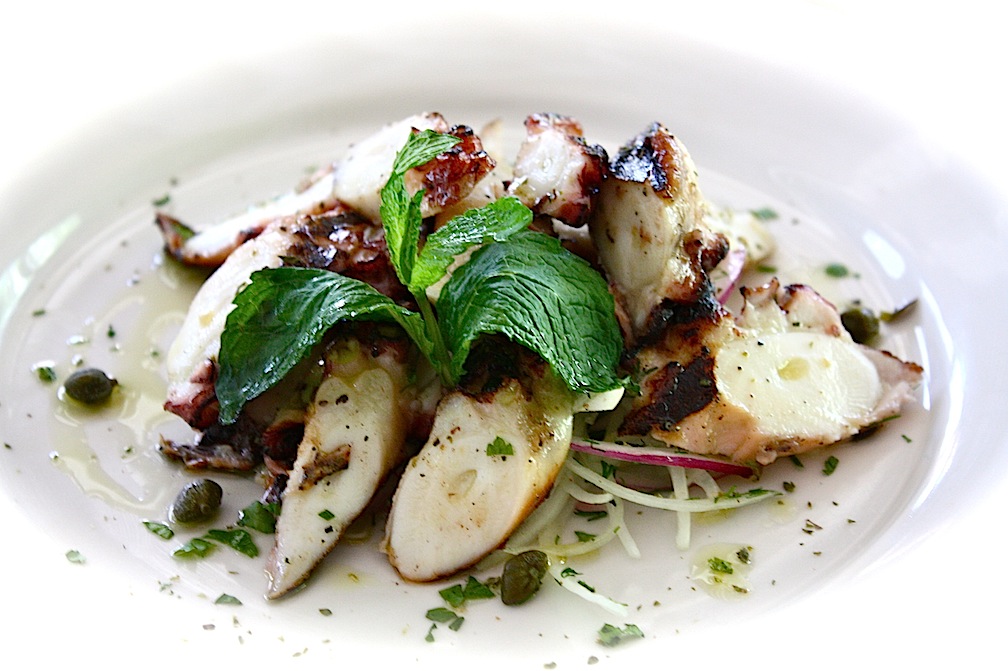 in parchment, with steamy
vegetables; it was just that, steamy and without
much flavor, the fish’s texture having
disintegrated.
in parchment, with steamy
vegetables; it was just that, steamy and without
much flavor, the fish’s texture having
disintegrated.
Don’t
forget the usual and irresistible Greek sides like
oregano potatoes, giant lima beans in tomato, and
the wonderful greens called horta dressed
in
olive oil and lemon. The Greek desserts
push no envelope, but the honey cake is the best of
them, the cheesecake the least, the baklava
standard issue.
Anassa Taverna is clicking right
now, not least at the bar, and since this
neighborhood is not currently rich in good
Mediterranean fare, it’s a fine place to go when you
have a true yearning for the kind of food that
always leads to a Zorbian sense that life is, after
all, pretty damn wonderful.
❖❖❖
NOTES
FROM THE WINE CELLAR
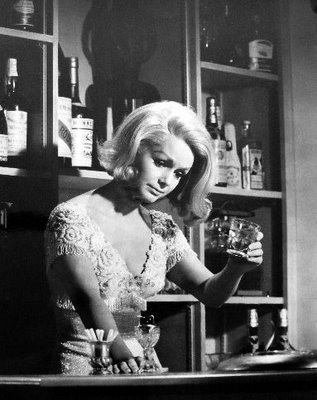
Wines for Healthy Year-End Holidays
By Geoff Kalish, MD
While toasting and drinking add to all the
merriment associated with the year-end holidays,
researchers have recently reported some important
considerations regarding the choice of
alcohol-containing beverages so as not to detract
from post-festivity well-being. In fact, these
considerations can not only mean the difference
between sobriety and inebriation, but can also
affect sex drive as well as whether the event is
followed by a peaceful night’s sleep or one
disturbed by bouts of “heartburn.”
The following discusses why this
is so, what we can do about it and which wines are
best to drink or serve at your year-end holiday
event for a healthy outcome.
Studies have now shown that in
men alcohol consumption can decrease the production
of testosterone--the hormone produced primarily in
the liver (but also in the testes)--that is
instrumental in enhancing libido, physical arousal,
attaining an orgasm, as well as the intensity and
amount of pleasure produced from an organism. (In
women, while testosterone is likely also associated
with sexual arousal, it appears that the situation
is more complex and the effect of alcohol not as
profound.) So, in men, the more alcohol consumed
over a shorter period of time, the lower the
testosterone level. In addition, there appears to be
a delayed effect of alcohol,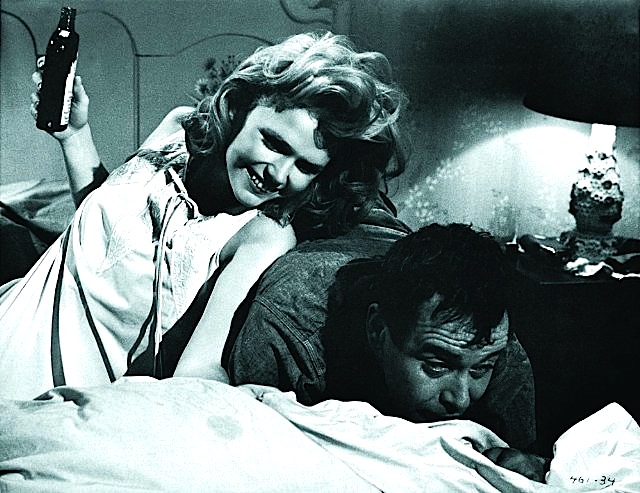 with testosterone
reaching its lowest levels some hours after the
blood alcohol level has peaked. What this means is
that, if a man consumes a large amount of
alcohol early in the evening, his sex drive will be
maximally decreased later in the night or the next
morning. Clearly, drinking moderate amounts of
relatively low-alcohol wine along with food,
especially items rich in carbohydrates and protein
(which slow absorption of alcohol from the gut) is
the way to go for those planning amorous activities
following a holiday dinner or party. As to what
constitutes a moderate amount, most authorities on
the subject recommend limiting intake to 12 to 16
ounces of wine over at least 4 to 6 hours or more.
And, importantly, to keep the blood alcohol from
peaking too rapidly, the wine should be consumed
slowly.
with testosterone
reaching its lowest levels some hours after the
blood alcohol level has peaked. What this means is
that, if a man consumes a large amount of
alcohol early in the evening, his sex drive will be
maximally decreased later in the night or the next
morning. Clearly, drinking moderate amounts of
relatively low-alcohol wine along with food,
especially items rich in carbohydrates and protein
(which slow absorption of alcohol from the gut) is
the way to go for those planning amorous activities
following a holiday dinner or party. As to what
constitutes a moderate amount, most authorities on
the subject recommend limiting intake to 12 to 16
ounces of wine over at least 4 to 6 hours or more.
And, importantly, to keep the blood alcohol from
peaking too rapidly, the wine should be consumed
slowly.
As to the
effect of alcohol on heartburn--a searing or burning
sensation in the chest made worse by lying down--it
has been found that large amounts over a short
period of time have an increased likelihood  of inducing the condition,
through an effect on the upper gastric tube
(esophagus). In fact, in a study conducted just a
few years ago in Japan, it was found that the men
who drank the largest amount of alcohol over a
period of time had the most severe symptoms. On the
other hand, another recently published study
conducted by researchers at Kaiser Permanente in
California showed that small amounts of wine (a
glass daily) might have a protective effect on the
lining of the upper gut. Moreover, this protective
effect was not seen in men with beer or distilled
spirits.
of inducing the condition,
through an effect on the upper gastric tube
(esophagus). In fact, in a study conducted just a
few years ago in Japan, it was found that the men
who drank the largest amount of alcohol over a
period of time had the most severe symptoms. On the
other hand, another recently published study
conducted by researchers at Kaiser Permanente in
California showed that small amounts of wine (a
glass daily) might have a protective effect on the
lining of the upper gut. Moreover, this protective
effect was not seen in men with beer or distilled
spirits.
So, like the situation with the
effect of alcohol on testosterone, the evidence from
these studies strongly indicates that to maintain a
healthy gut, relatively low-alcohol wine in moderate
quantities is preferable to other alcohol-containing
beverages, especially for year-end holiday events.
And, there does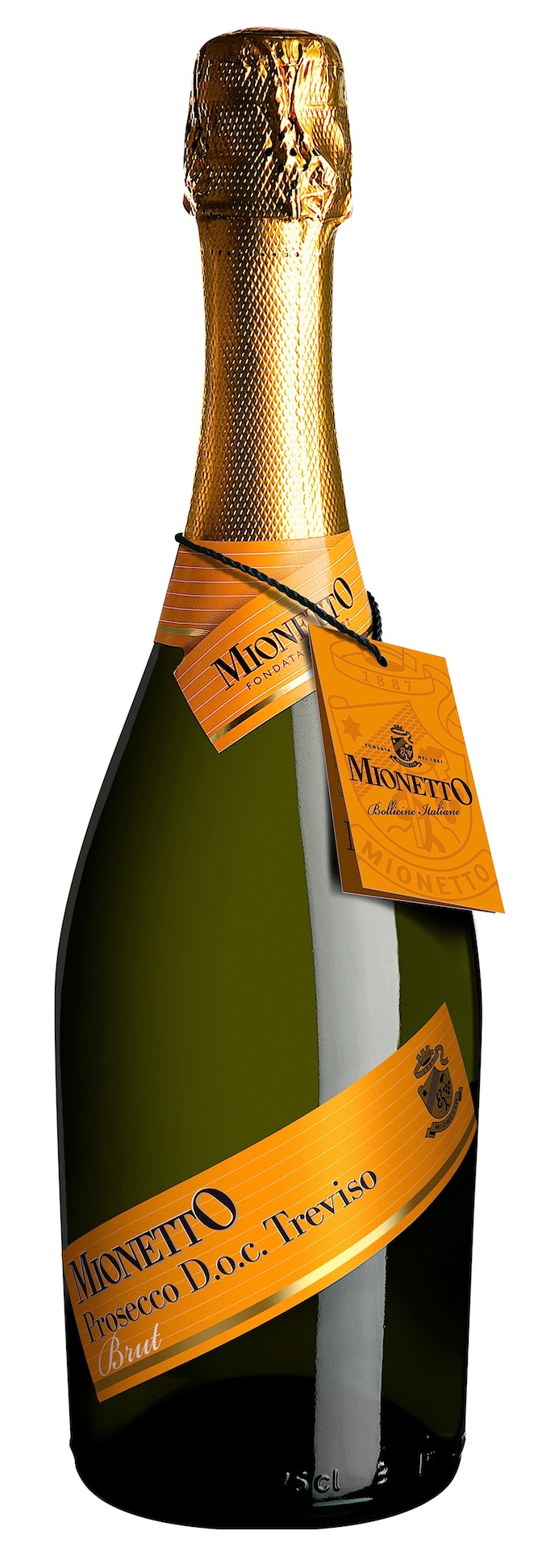 not seem to be any
difference between whites versus reds. So, to set
you on the right path for an enjoyable, healthy
holiday season, the following widely available wines
are recommended.
not seem to be any
difference between whites versus reds. So, to set
you on the right path for an enjoyable, healthy
holiday season, the following widely available wines
are recommended.
SPARKLING
Non-vintage Prosecco – In general these Italian
bubblies contain less alcohol than French Champagne
or California sparkling wine. However, remember to
sip slowly since the carbon dioxide in these wines
enhances alcohol absorption. Brands to look for
include Candoni
and Nino
Franco Rustico, Zardetto and
Mionetto.
 WHITES
WHITES
Moscato d’Asti – These Italian wines have about 6 percent alcohol and a very fruity, slightly fizzy taste with a somewhat sweet finish and make good matches for hors d’oeuvres, fruit and cheese. Two standouts are the 2012 Bartenura and the 2012 La Spinetta.
Viñho Verde – These dry whites from Portugal, with a bit of effervescence, usually contain less than 10 percent alcohol and mate perfectly with seafood and chicken dishes. Try the 2012 Casal Garcia or the 2012 Grinalda.
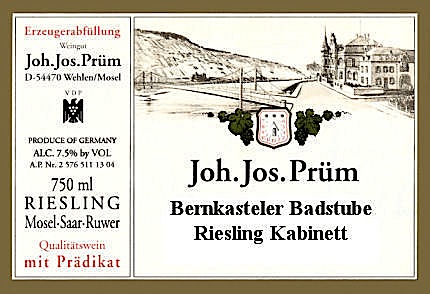
German Riesling Kabinett – The best of these
contain 8 to 10 percent alcohol and have a slightly
sweet bouquet of apricots and peaches and a touch of
acidity in the finish that marries well with shrimp,
oysters and other raw shellfish. Brands worth
seeking out include Dr. H.
Tanisch, Joh. Jos. Prüm, Geyser Weinheimer
and Weingut
Johanneshof.
REDS

Lambrusco – These Italian red bubblies usually have less
than 11 percent alcohol and make great aperitif
wines to serve with prosciutto, tuna tartare and
pigs-in-the-blanket. Reliable brands include Riunite,
San Giuseppe
and Opici.
Beaujolais Nouveau – From France, these light
fruity, grapey quaffs usually contain about 11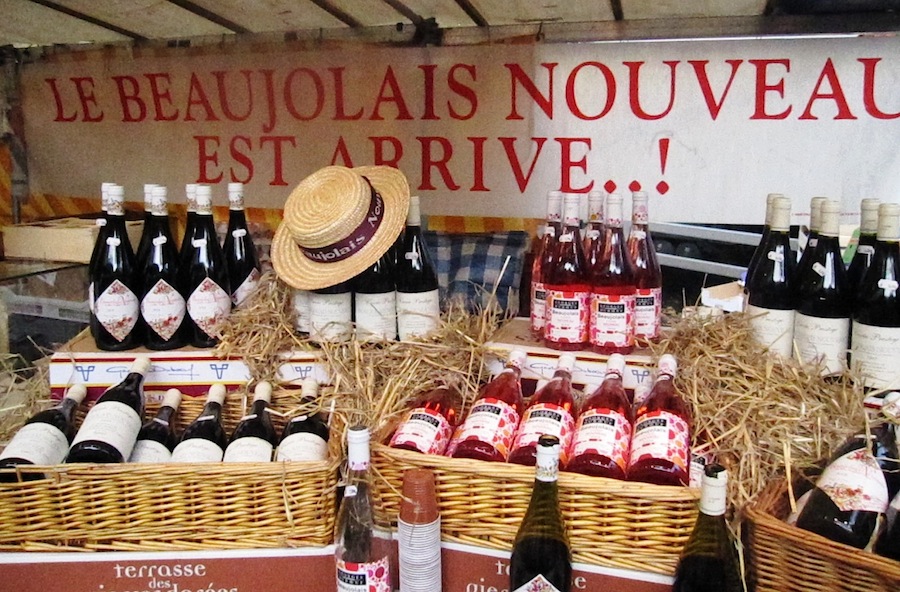 percent alcohol and pair
well with a range of fare from grilled or poached
salmon to veal and beef. Good bets are the 2013s
from Georges
Duboeuf and Joseph Drouhin,
which feature bright, festive labels sure to
heighten the mood at any year-end celebration.
percent alcohol and pair
well with a range of fare from grilled or poached
salmon to veal and beef. Good bets are the 2013s
from Georges
Duboeuf and Joseph Drouhin,
which feature bright, festive labels sure to
heighten the mood at any year-end celebration.
Geoff Kalish,
MD is a former wine columnist for The
Wine Spectator and The New York Times
(Westchester Weekly Section) and has long studied
and reported on the effects of wine on health.
❖❖❖

MORE SIGNS OF
ASIAN DECADENCE
Japanese company B&H Lifes has launched a wine specifically for cats, called "Nyan Nyan Nouveau," made from sugar, cabernet grape juice, vitamin C, and catnip. "Nyan nyan" refers to the meowing sound cats make and Beaujolais Nouveau, for $4 (399 yen) a bottle, with only 1,000 bottles on sale.
AT LEAST PAY YOUR BILL FIRST
"One thing that you definitely shouldn't do is, in the
middle of your main course during summer, when you see
two young girls swimming outside, you definitely
shouldn't leave your table, take your clothes off,
show your middle-aged hairy body, and jump into the
water with the two young girls. That, you definitely
shouldn't do."--“Worst
Restaurant Customers: René Redzepi on
Kleptomania and Creeps at Noma,” Epicurious.com
❖❖❖
Any of John Mariani's
books below may be ordered from amazon.com.
 |
My latest book, which just won the prize for best book from International Gourmand, written with Jim Heimann and Steven Heller, Menu Design in America, 1850-1985 (Taschen Books), has just appeared, with nearly 1,000 beautiful, historic, hilarious, sometimes shocking menus dating back to before the Civil War and going through the Gilded Age, the Jazz Age, the Depression, the nightclub era of the 1930s and 1940s, the Space Age era, and the age when menus were a form of advertising in innovative explosions of color and modern design. The book is a chronicle of changing tastes and mores and says as much about America as about its food and drink.
“Luxuriating vicariously in the pleasures of this book. . . you can’t help but become hungry. . .for the food of course, but also for something more: the bygone days of our country’s splendidly rich and complex past. Epicureans of both good food and artful design will do well to make it their coffee table’s main course.”—Chip Kidd, Wall Street Journal.
“[The menus] reflect the amazing craftsmanship that many restaurants applied to their bills of fare, and suggest that today’s restaurateurs could learn a lot from their predecessors.”—Rebecca Marx, The Village Voice. |
"Eating Italian will never be the same after reading John Mariani's entertaining and savory gastronomical history of the cuisine of Italy and how it won over appetites worldwide. . . . This book is such a tasteful narrative that it will literally make you hungry for Italian food and arouse your appetite for gastronomical history."--Don Oldenburg, USA Today. "Italian
restaurants--some good, some glitzy--far
outnumber their French rivals. Many of
these establishments are zestfully described
in How Italian Food Conquered the World, an
entertaining and fact-filled chronicle by
food-and-wine correspondent John F.
Mariani."--Aram Bakshian Jr., Wall Street
Journal.
"Equal parts
history, sociology, gastronomy, and just
plain fun, How Italian Food Conquered the
World tells the captivating and delicious
story of the (let's face it) everybody's
favorite cuisine with clarity, verve and
more than one surprise."--Colman Andrews,
editorial director of The Daily
Meal.com. "A fantastic and fascinating
read, covering everything from the influence
of Venice's spice trade to the impact of
Italian immigrants in America and the
evolution of alta cucina. This book will
serve as a terrific resource to anyone
interested in the real story of Italian
food."--Mary Ann Esposito, host of PBS-TV's
Ciao
Italia. "John Mariani has written the
definitive history of how Italians won their
way into our hearts, minds, and
stomachs. It's a story of pleasure over
pomp and taste over technique."--Danny Meyer,
owner of NYC restaurants Union Square Cafe,
Gotham Bar & Grill, The Modern, and
Maialino.
|
 |
 |
 |
 |
 |
 |
 |
 |
 Everett Potter's Travel Report:
Everett Potter's Travel Report: 
 Eating Las Vegas
is the new on-line site for Virtual Gourmet
contributor John A. Curtas., who since 1995
has been commenting on the Las Vegas food
scene and reviewing restaurants for Nevada
Public Radio. He is also the
restaurant critic for KLAS TV, Channel 8 in
Las Vegas, and his past reviews can be
accessed at KNPR.org.
Click on the logo below to go directly to
his site.
Eating Las Vegas
is the new on-line site for Virtual Gourmet
contributor John A. Curtas., who since 1995
has been commenting on the Las Vegas food
scene and reviewing restaurants for Nevada
Public Radio. He is also the
restaurant critic for KLAS TV, Channel 8 in
Las Vegas, and his past reviews can be
accessed at KNPR.org.
Click on the logo below to go directly to
his site.

Tennis Resorts Online: A Critical Guide to the World's Best Tennis Resorts and Tennis Camps, published by ROGER COX, who has spent more than two decades writing about tennis travel, including a 17-year stretch for Tennis magazine. He has also written for Arthur Frommer's Budget Travel, New York Magazine, Travel & Leisure, Esquire, Money, USTA Magazine, Men's Journal, and The Robb Report. He has authored two books-The World's Best Tennis Vacations (Stephen Greene Press/Viking Penguin, 1990) and The Best Places to Stay in the Rockies (Houghton Mifflin, 1992 & 1994), and the Melbourne (Australia) chapter to the Wall Street Journal Business Guide to Cities of the Pacific Rim (Fodor's Travel Guides, 1991).


MARIANI'S VIRTUAL GOURMET
NEWSLETTER is published weekly. Editor/Publisher: John
Mariani.
Contributing Writers: Christopher Mariani, Robert Mariani,
John A. Curtas, Edward Brivio, Mort Hochstein,
Suzanne Wright, and Brian Freedman. Contributing
Photographers: Galina Stepanoff-Dargery,
Bobby Pirillo. Technical Advisor: Gerry McLoughlin.
© copyright John Mariani 2013
